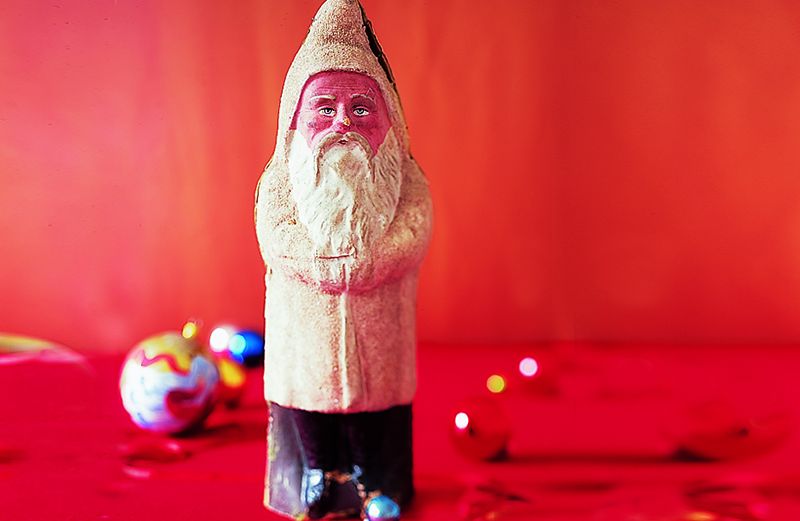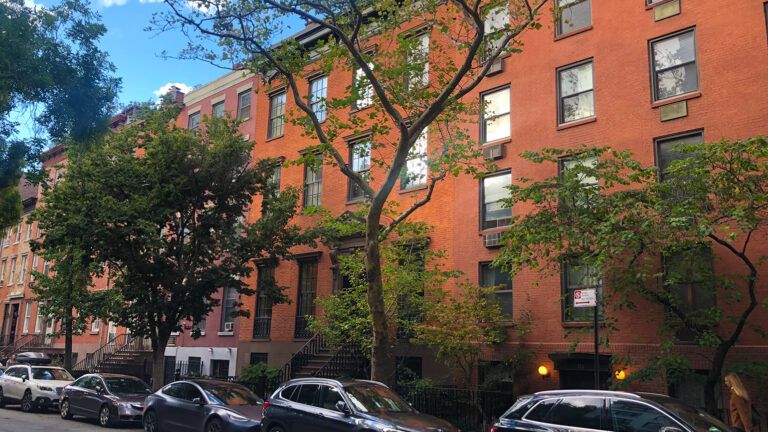When I was very young, a figure representing Santa Claus held sway at the top of our Christmas tree. Fitting over the tree’s top like a cone, this Santa had a flowing white beard, but his countenance was more dignified than merry. Instead of a cheerful red suit, he wore a robe of pinkish brown with a pointed hood.
“That is not Santa Claus,” I announced to my mother one year, pointing to the top of our tree.
“That Santa was on my tree when I was a little girl and on Gran’s childhood tree before that,” she said. “It’s traditional. We love it.” So much for my rebellion.
More than 70 years have passed since I was a boy. And tradition still holds its own. The solemn Santa continues to reign in his honored spot atop Varner family Christmas trees.
Yet even as I respect it as a treasured family keepsake, I secretly harbor my old suspicions: Who did this robed figure think he was, passing himself off as Santa Claus? I did, that is, until one spring day while on a cruise to the Middle East.
Our ship docked in southern Turkey and I took the opportunity, guidebook in hand, to wander the ancient land. Strolling in the garden of a beautiful 11th-century Byzantine church, I stopped in surprise.
Before me was a life-size statue of a dignified man with a flowing beard, garbed in a hooded robe with a peaked top. Statues of a little boy and girl stood beside him.
He reminded me immediately of our Varner family Santa. But what was this statue? My guidebook enlightened me. I was in St. Nicholas Church and the statue before me was of one Saint Nicholas, who “became the patron saint of children to whom he brings Christmas presents.”
Back home in Manhattan, I did a bit of historical digging. I learned that Saint Nicholas was a fourth-century bishop of Myra, which is now in Turkey, and although few verifiable facts exist about his life, legends abound.
Saint Nicholas was said to have performed miracles (including riding out a terrible storm at sea in his hat), shown great courage in the face of religious persecution, and done good deeds.
Over the ensuing centuries he became one of the most admired of all saints, with churches named for him in Asia, Europe and eventually America.
Nicholas was the patron saint of Russia and the subject of many a medieval play; artists loved to depict him too. His popularity grew even more when in 1087 Italian traders brought what they claimed were his bones to Bari, in southern Italy, and the city became crowded with pilgrims.
Was it a myth that he gave gifts to children? I can only say that some legends become greater than their source—but are nonetheless founded on genuine acts of generosity and good will.
As the decades rolled on, it was inevitable that Nicholas should come to America. He arrived with the Dutch settlers who founded a city they called New Amsterdam. They called him “Sinter-Klass”—Santa Claus—and honored him on his feast day, December 6.
By now he was wearing a bishop’s robe and riding on a donkey, just as he had in the Netherlands, bearing gifts for well-behaved children. When the English took over in 1664 and renamed the city New York, they went back to calling him Saint Nicholas.
In 1809, Washington Irving published Knickerbocker’s History of New York, in which Santa was described as an old man in dark robes on a flying horse. In an 1821 poem called “The Children’s Friend” the horse was supplanted by a reindeer.
But the changes that appealed to me most were wrought by a professor at General Theological Seminary, Clement Moore, who in 1823 dashed off a Christmas poem for his children. A houseguest sent it to a newspaper and when printed it became an overnight sensation.
A Visit From St. Nicholas—“’Twas the night before Christmas … ”—portrayed the Saint Nick I envisioned and was drawn to. Round of belly and full of merriment, his “twinkling eyes” and “cheeks like roses” looked anything but somber.
His sleigh was pulled not by a single reindeer but by eight, who waited patiently chimney-side while the “jolly old elf” made his remarkable descent.
Moore had switched Santa’s appearance from December 6th to the night of the 24th, but it was clear the gift-bearing interloper was still Saint Nicholas. In the 1870s political cartoonist Thomas Nast illustrated his idea of Santa Claus for the pages of the popular magazine Harper’s Weekly —Santa, lolling on a snow-capped chimney smoking a long-stemmed pipe. Nast established Santa’s home at the North Pole and gave him elves to do his manufacturing. As the turn of the century approached, young Virginia O’Hanlon wrote to the New York Sun to ask if there really was a Santa Claus, and the editors answered with a resounding “yes” in an editorial that is still reprinted in Christmas Eve newspapers around the country.
I’ll always be fond of the Santa who is round and red-suited, full of fun and plenty of ho-ho-ho. But now I’m aware of a new dimension to that rollicking holiday figure. At last I feel friendly toward the monk-like Santa at the top of our family tree, and this Christmas I’ll look at the old codger with new and appreciative eyes. What as a child I mistook for dourness was really the saintly piety of his Christian origins showing through. We may have given Saint Nicholas a secular makeover, dressed him up in a bright red suit and transformed his simple kindness into roistering jollity. Yet the gifts he brings down the chimney to good children still echo God’s gift to us of his only son.
Download your FREE ebook, True Inspirational Stories: 9 Real Life Stories of Hope & Faith
For more inspiring stories, subscribe to Guideposts magazine.






